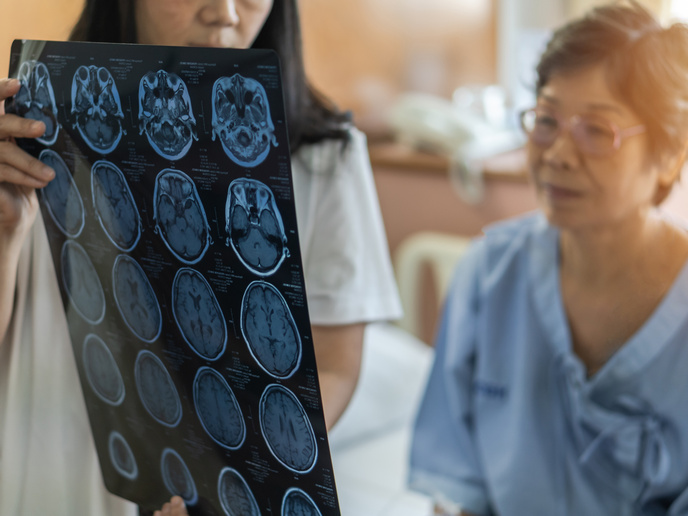When nanostructured electrodes improve electrical stimulation to treat stroke
The second leading cause of disability, ischaemic stroke, is the result of blood clots in arteries reducing the blood flow of oxygen to the brain. Despite Europe’s resulting healthcare costs amounting to EUR 64.1 billion per year, there is no clinical pathway with a predictable endpoint. To rectify this situation, the EU-funded Marie Skłodowska-Curie Actions(opens in new window) (MSCA) project NeuPES researched the potential of electrical stimulation for managing post-stroke recovery. Key to the success of the project’s approach is the structural design of effective electrodes (see photo above) at the nanomolecular level.
How disorder has an advantage over simplicity
José Miguel García-Martín, principal investigator of NeuPES and research scientist at the Spanish National Research Council explains: “Through a combination of engineering and neurobiology, we have developed, characterised and tested nanostructured electrodes made of titanium, gold and platinum in the form of sets of tilted nanocolumns. The advantage of these nanostructures, as opposed to thin-film electrodes, is primarily an increase in surface area that improves the electrical properties – reduced impedance and higher charge injection capacity.” But the benefits don’t stop with better electrical characteristics. The team fabricated the nanocolumns using glancing angle deposition with magnetron sputtering(opens in new window), the latter being an environmentally friendly technique widely used in industry, so this approach can be scaled up. Moreover, “due to the high surface area of the nanostructured electrodes,” explains Sahba Mobini, the MSCA fellow, “while we deliver desirable charge to the system, we avoid irreversible faradic reactions that are responsible for electrode erosion, water splitting and generation of toxic by-products.” The nanostructured electrodes can also inject more charge in the system (increased current) within the safe potential range, compared to simple thin films from the same metal. These characteristics are critical for both in vitro and in vivo applications to apply well-defined, effective and safe stimulation.
Extending the model for neurobiology research
Based on these results, the team designed an imaging-compatible miniaturised device for in vitro electrical stimulation of cells. This benefits neurobiology research where resources such as cells and growth factors are frequently limited and multiple replications are needed for the experiments and in situ imaging. Using the stroke model, ischaemic cells were given electrical stimulation in a lab set up. A significant increase in the expression of two proteins – synaptophysin and beta-tubulin – was observed, indicating neural plasticity(opens in new window). This means that the brain can adapt to a new environment as increased neuroplasticity could herald the brain’s ability to recover after a stroke. “Although the results are promising, more replicated experiments are needed,” adds Mobini. The project finished 4 months earlier than planned as Mobini was awarded a 4-year project funding by the Comunidad de Madrid - Atracción de Talento programme(opens in new window). Under the new project, where the objectives of NeuPES are being continued, an accelerated ageing system has been built in vitro. “This could be used to predict the lifetime of nanostructured electrodes after implantation,” explains García-Martín. “NeuPES has secured the intellectual property of this invention under the Spanish Patent Application system, and we are actively looking for industrial partners. Besides, we are preparing a scientific manuscript to be published soon,” concludes García-Martín.







